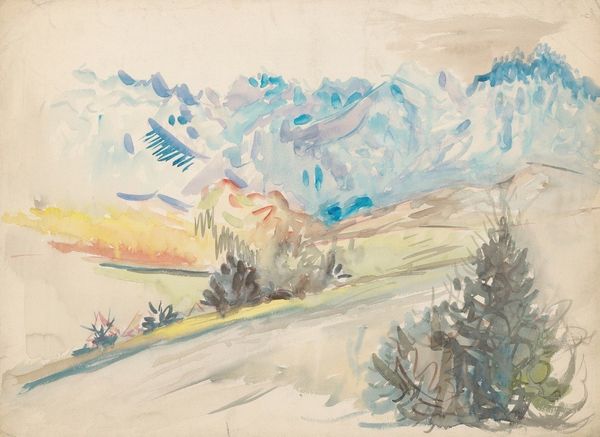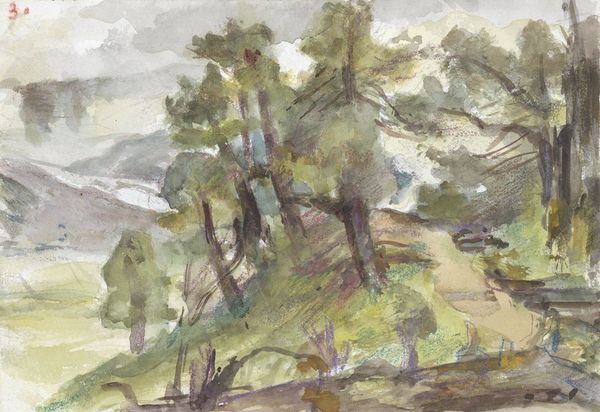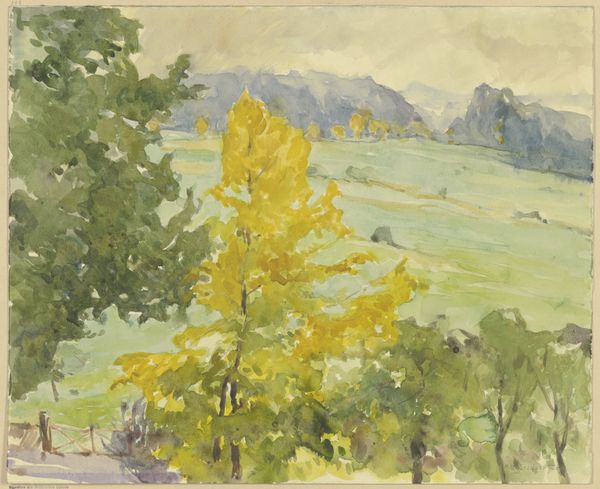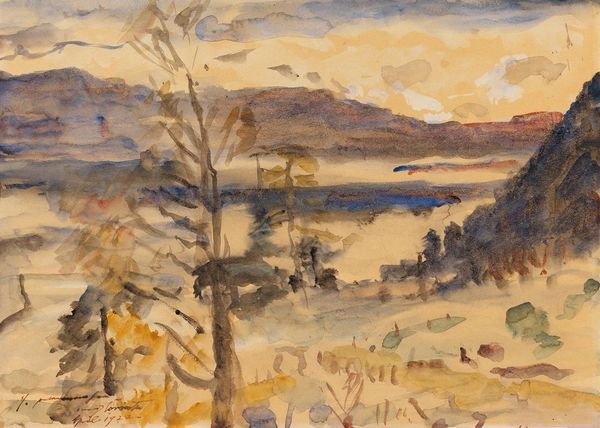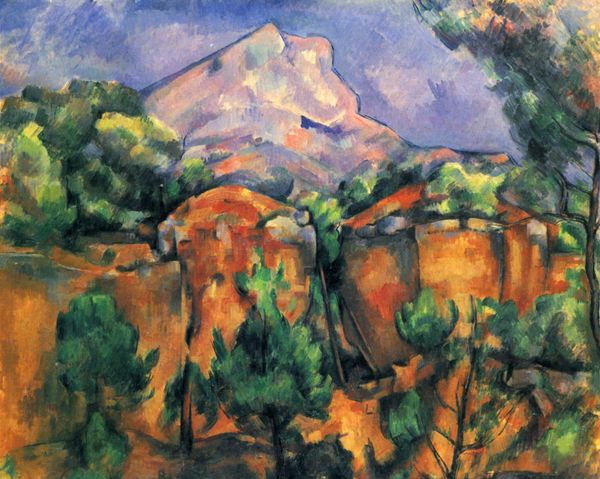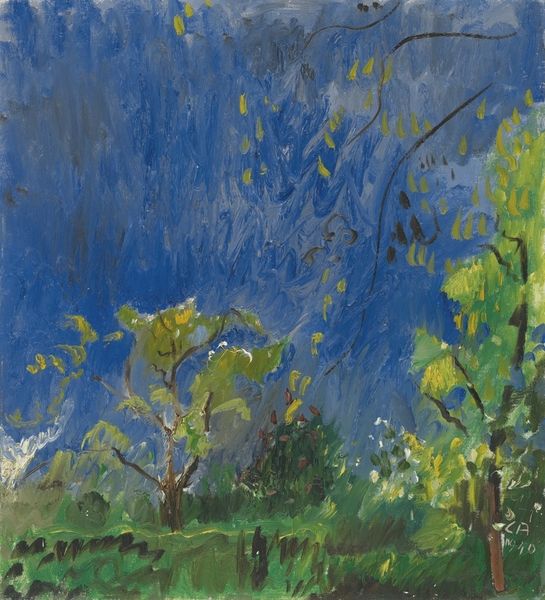
Dimensions: 50.8 x 35.56 cm
Copyright: Public domain
Editor: Here we have John Singer Sargent’s watercolor painting, "Purtud Fir Trees and Snow Mountains," from 1908. The forest almost feels like it's breathing; its mood, though, is harder to pin down – serene, yet a little brooding. What do you make of it? Curator: Brooding, yes, that's a lovely word for it. For me, it whispers of a fleeting moment, captured en plein air, almost like a visual haiku. Sargent, more known for his portraits, takes a different path here, inviting us into a silent dialogue with nature. Have you noticed how the brushstrokes mimic the wind rustling through the pines? Editor: Absolutely, that's part of why I find the mood ambiguous, almost oscillating between awe and melancholy. Why do you think he opted for watercolor? It’s so different from his society portraits. Curator: Precisely! Watercolor allowed him to seize the immediacy of light and shadow, the transient beauty of the Swiss Alps. Unlike oil, its very nature demands a certain surrender to chance, doesn't it? Perhaps, Sargent sought to liberate himself from the rigid expectations of portraiture. It is almost as if he’s painting music. Editor: Painting music… I love that. So, this wasn't just a landscape; it was a kind of personal rebellion? Curator: Perhaps a liberation more than a rebellion. Think of it as him turning down the volume of the world for a while, to listen to the symphony of the forest. But who knows? Artists, like snowflakes, are gloriously unpredictable, aren't they? Editor: I see it now. The forest, the mountains – they’re all players in his personal orchestra. Thanks, that’s truly helpful! Curator: The pleasure was all mine. Next time you encounter a landscape, try listening to its silent song, it may change the way you see the world.
Comments
No comments
Be the first to comment and join the conversation on the ultimate creative platform.
